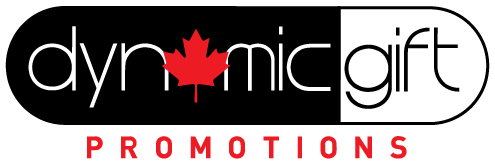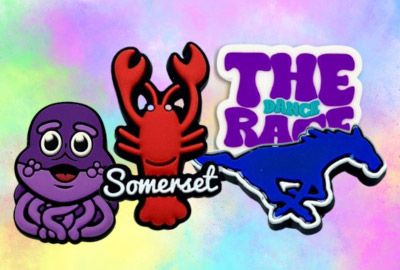How to Leverage a Good Loyalty Program to Grow Your Business
Every smart business owner will agree that their customers are their best asset, but they often don’t realize just how important it is to keep their customers happy. Did you know that you will spend 6 – 7 times more to find new customers, compared to engaging current customers to purchase from you again? Repeat customers tend to spend more on their purchases, especially since they have already established a good relationship with your company.
If you are looking for ways to grow your business, then one of the best things that you can do is to tap into your list of current customers. Look for ways to increase their purchases, because this focus will be a better investment than trying to find new customers to connect with. I call it turning a conversion into a conversion. It means that if the customer has trusted you enough to place their order or request your service, then they are going to trust you again, as long as you haven’t wronged them.
This is where a loyalty program can help you
Loyalty programs are becoming more popular, because they offer a way for you to encourage your current customers to make repeat purchases. A good loyalty program will encourage people to buy more frequently, and it is likely that they will make larger purchases. With this system, customers will earn points or rewards that can be redeemed later on for free items or discounts on their purchases.
Are you looking for a way to make your company stand out from the completion? Try implementing a loyalty rewards program in order to strengthen the bond between your company and the customers. Here are five important steps that you can use to ensure that your loyalty rewards program is effective:
1. Easy to Join
If you make each customer jump through a lot of hoops to join your program, then it is likely that they won’t make the effort. You need to make it very easy for people to join your program. Lower that barrier by making it easy to sign up online with an absolute minimum of required fields. Or have your staff ask if people would like to join, then provide them with a printed plastic reward card
You can also give people a free lanyard or key tag to hang from their keys and remind them of your brand.
To increase the likelihood that your customers will put in the effort to sign up for your rewards program, you might consider offering some type of an incentive or welcome offer. For example, a 10% discount on a purchase when they sign up. This incentive gets the person excited to start earning incentives and makes it easy for them to get some points on their account. Additionally, the incentive often outweighs the time and barriers that are required to sign up.
2. Offer Enticing Rewards
Offering a loyalty is beneficial only if your customers are interested in the rewards that are available. Make sure that you understand your target demographic and the things they are interested. You might offer a discount, free merchandise, cash back, exclusive perks or even VIP treatments. Consider the desires of each person and find something that most people will be interested in.
You might also consider offering smaller rewards along the way. For example, promotional products can be a great motivational booster for people as they are making purchases. It is a win-win for you and your customers, because they will be excited about getting the free products and you will be able to spread information about your brand more effectively.
Choose something that your customers will be excited about, and it will increase the participation in the rewards program. Do some research to see what competitors are offering and get ideas from other companies. You might even consider asking your customers to see what they want. It can be as simple as sending out a small survey or questionnaire to find out more about the things that they are interested in.
3. Good Communication
One of the advantages to having a loyalty program is that it provides you the opportunity to talk with your customers more frequently. Good communication helps you to build the relationship with each of your customers, and it keeps them informed about their rewards and progress to earn the next prize. Look for methods of communication, such as text messages, email, or push notifications through an app.
Even if your customers aren’t actively shopping, they can still stay updated about current promotions or other deals that are happening. Customers love to pair their rewards shopping with sales, helping them to leverage their spending a little more.
Offer double points days to get the customers in the doors more frequently. Send out updates about their point balance or the next reward that is available. Highlight current promotions, and help customers understand how easy it is to reach their rewards. All of these communication methods make it easy for you to stay in touch with your customers and increase the frequency of purchases.
4. Simple to Understand
When a loyalty program has a lot of confusing rules and loopholes, it can make people frustrated with the system. These problems will cause customers to quickly lose interest, and it might even drive them to buy from your competitor instead! Make sure that the incentive structure is simple to understand, so that customers can remember the details without reading through a long list of fine-print rules.
When customers quickly remember what they are earning and how they can earn the rewards, then they are much more likely to make a purchase in order to get them closer to their reward.
Examples of simple rewards programs include “Buy 10, Get 1 Free” for a coffee shop or lunch menu. Get a point for every dollar spent, and a $5 discount after you’ve spent $100.
It doesn’t matter if the points are based on the number of times a person visits your store or the amount of product that they buy. There are pros and cons to both of these program structures. Decide on a system that will be easy to implement with your business model, and make sure that it is simple for people to understand.
5. Profitability
Before you start a rewards program, you need to crunch the numbers and make sure that it is a profitable system for you to implement. It doesn’t make sense to give everything away and decrease from your company profits! Good rewards will increase the popularity of the loyalty program, but at the same time it is possible that you might cause financial hardship to your company if you are giving away too much. Do the math and make sure that you get a return on your investment, even when customers are leveraging the rewards program to the maximum level possible.
As you are analyzing the data, track information such as product margins and spending habits of your customers. Make sure that you take into account the fact that people will spend at different levels, which so you need to make sure that the program is profitable in the overall return that you will receive for your business. The goal is to increase revenue more than the cost that you will be spending on the rewards that are given to customers.
When you implement the new program, you will need to commit to the rewards that have been promised. So, it is best to do your research ahead of time, to ensure that you are committing to a program that won’t break the bank. Starting the program and then discontinuing it will break the trust you have built with your customer, and they will be disappointed if they learn that the loyalty program is shut down within a short time after it was launched.
Start Your Own Loyalty Program
As you can see, there are many advantages to starting a rewards program for your company. Use these 5 tips to help you effectively implement your program, to ensure the success for everyone involved. Make sure that the program will be profitable for the products that are you are offering. A little bit of research can go a long way to help you implement a program to have a positive impact on your bottom line.







